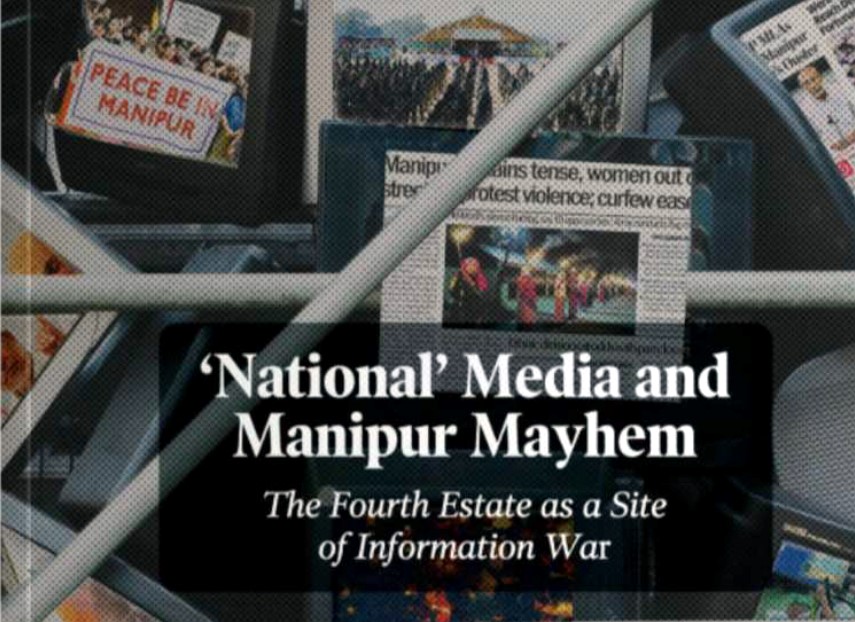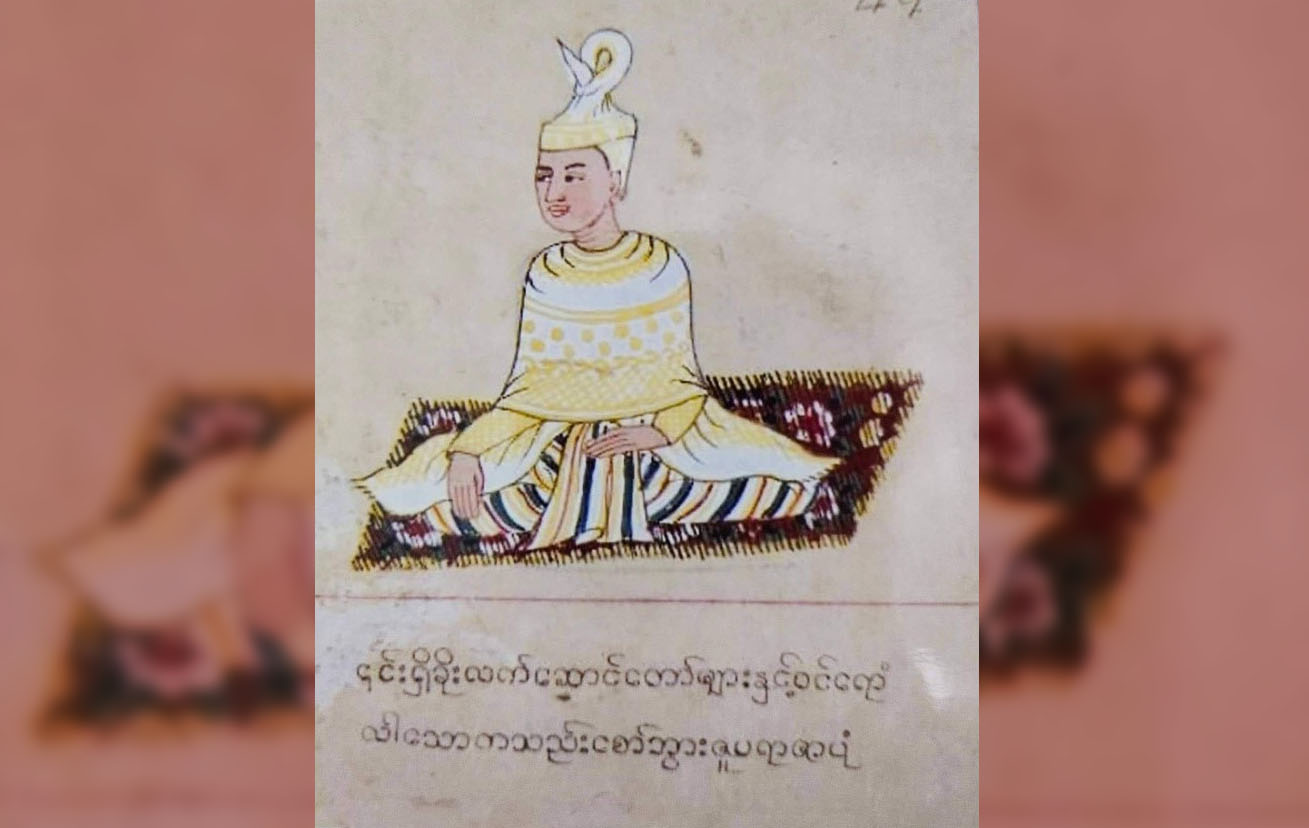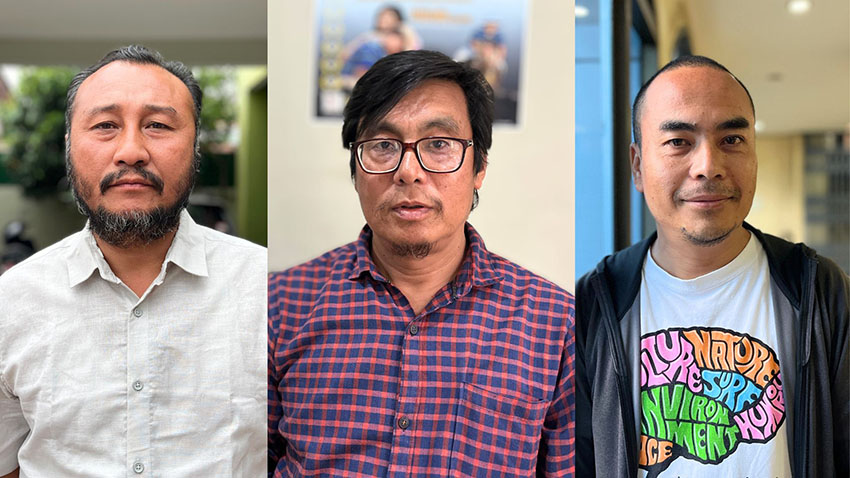The reportage on the Manipur crisis by the ‘national’ media is not fair insofar as it privileges the experiences of the ‘Kukis’ over that of the Meiteis, a Research Report said. The research report entitled, ‘National’ Media and Manipur Mayhem: The Fourth Estate as a Site of Information War was released on January 3, 2024 after a study was carried out by a research team under the supervision of Dr. Angomcha Bimol Akoijam of Jawaharlal Nehru University (JNU), Delhi. The report was published by Media and Policy Analysis and Advocacy Loisang (MAPAAL), Imphal. Hard copy of the report is not yet released pending ISBN.
The research report is available in digital form HERE
The study examines the reportage of five leading National media houses regarding the Manipur violence during the period of May 2023-August 2023. The five newspapers are The Hindu, The Indian Express, The Times of India, The Telegraph, and Hindustan Times. They are published from multiple centres across various major cities nationwide and have wide circulation.
According to the Research Report, the findings of the study showed that the media houses did not adhere to the codes of conduct they had laid down in many instances during their reporting about the crisis in Manipur. For instance, one of the key patterns that has been noted in the news reportage is the extent of the ‘sources’ being quoted in the news items. It has been found that the sources from the ‘Kuki’ community are quoted far more than those from the Meitei community sources in the news reports. This is true in both the non-sample study (covering all the news published in May and June 2023) as well as sample studies (covering news published from May to August 2023). The reportage on the Manipur crisis by the ‘national’ media is not fair insofar as it privileges the experiences of the ‘Kukis’ over that of the Meiteis.
Another instance of bias is in the linguistic strategies employed. The usage of the term “killed” to describe the murder of ‘Kukis’, as opposed to the usage of the term “died” to address the murder of Meiteis shows a purposeful manipulation in framing of the narrative. The use of “killed” to describe the ‘Kuki’ deaths implies an intentional, unjust, and unnatural loss of life, hinting at those responsible for these deaths. In contrast, the term “died” used to describe the Meitei deaths lacks the implication of intentional harm. Even when referring to an incident involving firing, it remains vague, deflecting attention from attributing responsibility to the ‘Kukis’ for the deaths of the three Meiteis who were in reality killed by ‘Kukis’, the Research Report added.
Moreover, the reportage of various cases has presented incidents in isolation or in a disconnected manner, which does not reveal the whole story, as was seen in the Khoijumantabi incident. By mentioning the beheading of David Theik (Kuki) before the killing of three Meiteis, the news report fails to deliver a “complete” and “accurate” picture. The conventional and ethical norm of reporting would have been to not mention the name of the communities involved, especially before verifying the facts so as to not aggravate the crisis. However, certain reports have followed this norm in a selective way, whereby the attacks on Meitei households are mentioned as victims belonging to a “particular group” but the attacks on ‘Kuki’ households are disclosed with descriptors such as ‘Kuki’, tribal, and minority. This leads to the overemphasis of the ‘tribals’ as the victims and veils the experiences of the Meitei victims, the Research Report pointed out.
The Research Report further said that the crisis in Manipur has unleashed a wave of death that destroyed lives, homes, and livelihoods of people across communities. About 60,000 to 75,000 people have been forcibly displaced and over 3,413 houses and 274 villages have been destroyed. While both the Meiteis and the ‘Kukis’ have suffered, national media reports portray a skewed narrative, often depicting one community solely as victims and demonising the other as perpetrators. Despite conventions of not naming communities in communal clashes, these reports unambiguously portray one community as victims and the other as aggressors. The analysis of non-sampled and sampled reports indicates a trend: while reports majorly refrain from naming the communities when mentioning the destruction of houses, in the reports that do disclose the identity of the communities, ‘Kukis’ are mentioned more often as victims and Meiteis as perpetrators, despite reported data showing more destroyed Meitei homes. This biased identification of victims and perpetrators in news reports distorts the reality of the crisis, emphasising one community’s victimhood and the other’s culpability, contrary to the actual destruction data.
This trend is also observed in reports on the destruction of places of worship. While the destruction of churches is mentioned in detail, there has been notable neglect in reporting about the destruction of temples, both Hindu and Sanamahi, located in the peripheral regions of the state. This might be due to the fact that 35.68% of the reports covered in the first two months were from Imphal and only 2.18% were from regions such as Moreh and Tengnoupal. Other regions in the state received even less coverage as the data for the four months was analysed. This disproportionate coverage of the places of violence could be due to the logistical challenges in reaching those periphery areas where violence broke out. As a result, the experiences of some communities got highlighted much more at the expense of others.
In terms of the correspondents reporting on the crisis, it was noted that out of 588 reports in May and June 2023, 518 were from non-local correspondents whereas only 70 reports were from local correspondents. This was a clear case of ‘parachute journalism’ wherein reporters are dispatched from distant regions or with limited local knowledge to cover crises or events, often lacking an in-depth understanding of the region’s historical context, cultural nuances, and intricate societal dynamics.
Meanwhile, local reporters provide crucial insights due to their connections to the community and a better grasp of the situation. This disproportionate ratio of the correspondents (non-local and local) raises concerns about the accuracy and depth of the coverage. This also raises a critical question as to why media organisations felt compelled to send reporters from distant regions rather than relying on local correspondents during the crisis. It also prompts inquiry into why certain newspapers had no local correspondents on-site to cover the unfolding events. Perhaps, it is the general neglect towards the Northeast region as compared to the rest of the country that becomes reflected in the media landscape, the Report said.
This trend of inadequate representation is intertwined with broader issues of narrative framing and community portrayal, as observed in both news reports and opinion pieces surrounding the crisis. The trend of presenting one community as victims and the other as perpetrators, along with citing factually incorrect statements and misrepresenting reality, is reflected not only in the news reports but also in the editorials and opinion pieces about the crisis. The framing of the ongoing crisis as a ‘Tribal vs. Non-Tribal’ or a ‘Minority vs. Majority’ or a ‘Christian vs. Hindu’ issue is not only incorrect and misleading but also erases the experiences of individuals who lie at the intersection of these identities, potentially creating disharmony in society. Take for example, the portrayal of the crisis as a ‘Tribal vs. Non-Tribal’ issue misrepresents the reality by implying that all tribal communities are under attack by those referred to as the ‘nontribal’. Not all tribal communities, such as the Tangkhuls, Rongmei/Kabuis, Poumais, Aimol, Anals, Marings, Marams, etc., are involved in the violence. This incorrect framing tends to deepen the disharmony and adds friction to an already vulnerable socio-political climate. Moreover, the framing of the crisis as a ‘Minority vs. Majority’ is also false because the determining factor of who is a majority and minority depends on the intersections of social and geographical context and is subject to change depending on the location. Additionally, the framing of the crisis as a ‘Christian vs. Hindu’ issue is also incorrect. Many Meiteis who follow Christianity, Sanamahism, a sizeable population of Meitei Muslims referred to locally as ‘Meitei Pangals’, and many ‘Kukis’ who follow Judaism, are also affected by the violence, and have experienced immense trauma, the Research Report mentioned.
In addition to incorrect framing, the editorial pieces also promoted false and unverified information regarding the origin of the violence on May 3, 2023. Firstly, the defacement of the War Memorial Gate, albeit a deplorable act, has been wrongly portrayed as the “destruction” of the gate. Secondly, the culprits of this vandalism have been labelled as the “Meitei mob”, even though no source has been cited for this allegation, nor has this information been verified or established to date, the Report added.
The Research Report said, “False information regarding the eviction of ‘Kukis’ from “tribal areas” by declaring them as “wetlands” or “reserved and protected forests” has also been peddled by the national media. This is false on several accounts. Firstly, none of the waterbodies in Manipur has been declared as “wetlands” to date. Secondly, the declaration of forests as reserved and protected areas has been done statewide, not just in Kuki regions. Thirdly, none of the declarations were made after 1990, although the editorials insinuate that the declarations were carried out under the present government of Manipur. Moreover, as per the forest official documents, it is noted that the evicted people are not confined to the ‘Kuki’ community, in fact the number of non-Kuki (85.7%) evicted far exceeds that of the ‘Kukis’ (14.28%). Even when the eviction is looked at in terms of non-ST and ST people, it is found that 76.5% of non-ST people were evicted as compared to 23.48% of ST people.”
Thus, there has been an attempt to frame this crisis in a manner that bolsters tribal victimology. In conclusion, the investigation of the media reportage during the Manipur crisis reveals a troubling reality. The media failed to adhere to the ethical standards of reporting and often published one-sided information, thereby distorting the reality of the crisis and deepening social rifts.
Additionally, a prospective study could conduct a similar investigation on the newspaper reportage after August 2023 and compare it with the data gathered in the first four months of the crisis to discern any evolving patterns. Further studies can be carried out by extending the period covered in the present study, (i.e., beyond May to August 2023) to see whether there is any change in the patterns of reportage and opinion pieces in these newspapers. Furthermore, to deepen our understanding of media vis-à-vis the Manipur crisis, an investigation can also be carried out by examining the newspapers published in Manipur, (especially from Imphal, Churachandpur, and Ukhrul) and other northeastern states such as Assam, Nagaland, and Mizoram. Besides, a gendered perspective will also enrich the present study. For instance, we can break down the sources cited in the news reportage in terms of gender. By doing so, we may see whether there is any difference in the way the crisis has been experienced and articulated by people of different genders. Such insight may help us to design a peacebuilding process involving women, the Research Report suggested.
Furthermore, the Research Report suggested that media organisations prioritise ethical journalism and offer diverse opinions on crucial matters to promote dialogue and understanding in regions prone to conflict. By doing this, they can live up to their potential of being a catalyst for positive change, rather than a source for conflict escalation.













1 thought on “The Reportage on Manipur Crisis by ‘National’ Media” Not Fair as it Privileges Experiences of ‘Kukis’ Over That of ‘Meiteis’: Research Report”
Thank you for presenting the actual findings of the research work. It will be good if you can continue the research from August 2023 to March, 2024. This will depic the crisis before and after the visit of the Union Home Minister to imphal. Every now and then firing is taking place at different places of imphal east,west, bishnupur, kakching and thoubal. The role played by Assam rifles and central forces to control the situation in the present crisis may be incorporated. Hundreds of memorandum submitted to governor and the union government. But what is ultimate outcome, people wanted to know. The consequences of the report submitted by the Editor’s guild of India may be highlighted. What about the wrong narratives/memorandum submitted to United Nations and European union… The next edition will be more authentic and interesting. Wishing you all the best.
Comments are closed.